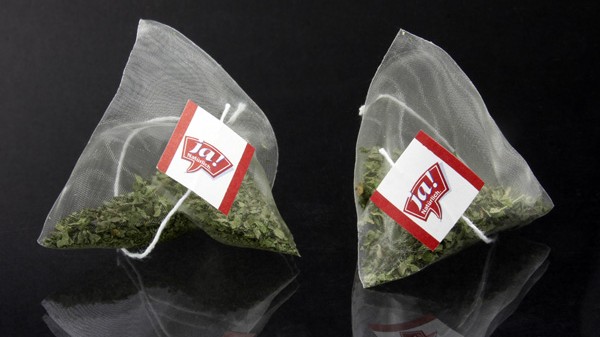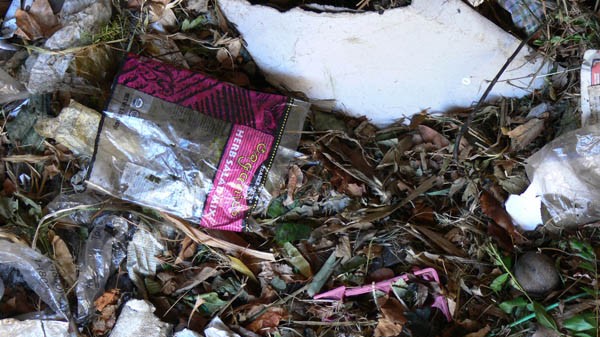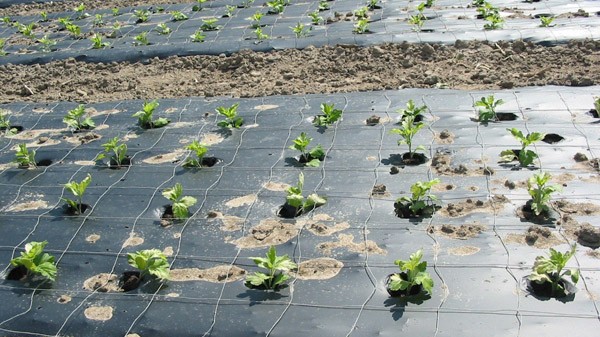TRANSCRIPT
Understanding COMPOSTABLE PLASTICS
Q: There are a lot of different types of plastics out there all with slightly different names and properties and it can get quite confusing. Let’s help our audience understand the focus on compostable plastics here, as opposed to biodegradable. Marco, can you give us a definition and clarification on what compostable plastic is, compared to the other types?
Marco Ricci: A compostable plastic is a plastic that is in some way compatible with the composting process, while a biodegradable plastic may degrade under microorganism effect but is not compostable. Normally compostability has a set of requirements which is larger than the one of biodegradability. This is the basic definition. That’s why many experts in this field and also a lot of NGOs started to talk about compostable plastics since about ten, twelve years ago so to avoid any misunderstanding.
Q: So there’s a larger set of requirements needed to be passed for a plastic to be deemed compostable. Hillary Near, do you agree with this definition?
Hilary Near: Yes and I do a lot of communication around behaviour change and with businesses who are making these choices, and I try and simplify it and explain that compostable has a time frame and environment attached to the word, whereas biodegradable doesn’t have any criteria really, and so anything can be biodegradable, including your leather shoe.
Our current STANDARDS and ASTM REVISIONS
Q: Let’s talk about the requirements and standards that are in place at the moment for compostable plastics. Marco, can you tell us what principle standards exist in Europe right now?
MR: The main standard is the EN 13432 standard of the year 2000, and it’s a standard for certifying compostable plastic. The standard has four requirements, which are: biodegradation of plastic in a definite amount of time and to a specific amount of matter; disintegration, which means we must non-distinguishable fragments in a definite period of time; toxicity – the absence of eco- toxicity in finished compost; and safety requirements. So, the material or compost that is obtained by using these plastics that are in-line with the standard must sustain plant growth. So they are the four requirements.
Q: This European standard is currently known as the most demanding and we strongly recommend complying with this in Lesson 4 of our video course. In the US we have the ASTM standard – which lays out similar criteria for compostability, but there are differences between the two. The ASTM standards are now being revised to be more in line with the European Standard, and also to sync better with the reality on the ground for compost site operators. Hilary, can you give us more information on what is happening with the changes?
HN: Currently the guideline is the lab testing, so there are no field testing protocols, but to your point earlier, the ASTM is working to revise the disintegration test method with two time and temperature profiles that are hopefully going to better replicate the actual field composting conditions of the products that they’re exposed to.
The reality is that the composting process is a very unique and varied process, and it’s very diverse across the United States in all the composting facilities that are accepting this material. So in order to hopefully reflect that and also address any operational impacts of these products on commercial compost facilities, the ASTM is working to revise that and to reflect better the commercial composting facilities situation.
I’m not on that working group, but many of the members who are also on the US Composting Council Task Force on compostable plastics are represented in that ASTM working group. We’ve worked with at least four compost facilities who represent more of an open windrow and a longer with lower temperatures, and then the second time and temperature profile is a shorter process with higher temperatures. So those are hoping to replicate better an aerated static pile and an open windrow composting process. And then apply those eventually to the ASTM standard to give guidelines for which products to work in which facilities.
Q: So at the moment the standards and testing protocols aren’t really in line with what composters are experiencing on the ground?
HN: Well there are a lot of questions about that currently, and that’s what the US Composting Council Task Force is hoping to reconcile and harmonise the lab with the field experience, as it sounds like the Italians are doing as well, given their extensive distribution of some compostable plastic products. So, we are also addressing that concern by reworking the ASTM method, but other composters have had different experiences. Some composters see different products possible remaining after their process, and some don’t. So it’s really anecdotal right now and there are only several composters who are testing products individually in their processes.
Q: And apart from the field testing aspect, are there any other differences between the standards worth mentioning, and are they being revised as well?
MR: Well, this is a good confrontation because as far as I remember, one main difference between the European standard and the ASTM standard is the requirement for biodegradability. If I remember correctly, the European standard requests a biodegradation – the conversion of the organic matter to CO2 – of ninety percent in about ninety days. While, if I’m not wrong, the ASTM standards has a lower requirement of about sixty percent. Maybe Hilary can confirm or correct me on that?
HN: I’m more familiar with the field testing situation, but that portion is not being revised. But I know that the time frame is one hundred and eighty days, and it does have less stringent sieve protocols for the resulting material that can be remaining after the lab testing.
Discussing Testing Protocols
Q: Marco, can you tell us what testing protocols are out there at the moment in Europe, and how effective they are?
MR: There are three main protocols for testing and assessing compostability in Europe. All of them refer to the European standard, obviously. The first one is the Vincotte standard – it’s probably the most well-known one. Then we have the German DIN standard. And the third standard is the one which was created in Italy, and it’s the compostable CIC standard. CIC is the Italian Composting and Biogas Association.
Obviously they have to satisfy the same criteria at the EU level, but there are some differences in the testing. For example, biodegradability and disintegration is tested by the Italian standard on a full-scale plant. So we’re running our tests in existing composting plants, while other standards normally rely on lab testing – so, on pilot scale plants. This was one of our decisions to be sure that the material effectively biodegrades and disintegrates when we are confronted with industrial plants.
Q: There is no call to make any revisions to them?
MR: Actually, our tests are strict enough, so we’re not demanding for stricter tests. Normally we verify that ninety percent biodegradation happens in about ninety days, which is a timeframe that complies with the standards we have in Italy for getting a mature compost – in an industrial plant, obviously. We’re talking about industrial plants, not about home or community composting.
Q: Can you tell me then what you hear from compost site operators in relation to the standards or any issues they might have in this area – what’s been their experience?
MR: We have to first make a distinction: the most common
compostable plastic to be found in Europe are bio-bags – bags used on purpose for separate collection of biowaste, and especially for food waste. This is a long-standing tradition of about twenty years. The first bio-bags made of compostable plastics were put on the market in the mid-nineties I would say. So this is one kind of item, and then we have other kinds of items. In any case, in countries such as Italy, Spain or the UK where this kind of bioplastic is very well known, compostable plastics do not pose any problem to the industrial plants.
The complaints are that, first of all, consumers sometimes misuse traditional plastics, or so-called biodegradable plastics, and use then incorrectly for separating and delivering biowaste. The other complaint is that there are some fake bioplastics on the markets, and these are creating some problems. Even though normally where separate collection is done on the curbside – or door-to-door – theses kinds of effects are of minor problems because the total amount of non-compostables that reach a composting plant are well below five percent in weight.
It might be different if we have rigid compostable plastics – so, rigid packaging. In that case, some composting facilities need to somehow restructure their process chain, since they’ve been planned for treating biowaste, and suddenly other kinds of waste items arrive. So, maybe they need some kind of shredding or sorting, and so on.
GREENWASHING and CONTAMINATION – the Composter’s Experience
Q: If one of the biggest issues is that non-compostable plastics are entering the stream, I’m sure this makes it very difficult to identify and sort compostable plastics from other types of plastics at a site?
MR: Yes, it is challenging, especially because it’s challenging anyway to sort out a bag at a composting plant. There is actually in my opinion (and I would like to know what Hilary thinks about this – another player here that is important. The first player is the waste producer, or the consumer – the one who is doing separate collection. But the second player in this chain is the collection service.
Once the collection crews and companies are somehow advised or bound to the fact that they have to guarantee the highest quality of the biowaste they collect, these people can then help enormously in sorting out critical spots in cities and neighbourhoods. And door-to-door, or curbside, collection helps with this because the collection crew has the ability to not empty a bin where incorrect bags have been used for source-separating organics.
HN: Yeah, I agree and that is definitely an opportunity in the United States. Some of the concerns are around the fact that we often have automated curbside collection, so the drivers aren’t even flipping the lids or able to monitor the material in the containers. But there is a best practice among all the material stream – the recycling, and composting – to leave messages or communicate to the customer that it is a priority to source-separate appropriately. So many haulers will give that feedback to their customers.
I’ve heard from composters that we’ve interviewed that [it’s good] when they have integration: as in, when the composters or sometimes the hauler have relationships with their consumers and can give them guidance on even which products to buy. But then there’s other communities where they’re accepting waste from many different haulers and they just don’t have the capacity to give that kind of feedback. So they’re dealing with higher contamination a lot of times. But that is definitely an opportunity to address all sorts of contamination that composters are dealing with.
CONFUSION In The Marketplace – EDUCATING Consumers
Q: Marco, you mention the consumer’s role in sorting the plastics, but this can be tricky when there is so much confusion over what’s compostable and what’s not. How can we ensure that the different types of plastics are easily identifiable for consumers as well?
MR: We have a lot of experience with that in Italy and in other European countries. A lot of advertising and information activities have to be done to be sure that consumers can distinguish correctly compostable plastics from non-compostable ones, and the existence of certification labels helps enormously with in that way.
The Italian Composting Association (and also the Italian law) strongly advise consumers to look for the certification label – one of the three main ones existing in Europe – and make sure they are to be found on bioplastics and especially on shopping bags made of bioplastics. According to our experience and common understanding (also exchanging views with other European composting associations), these labels can help consumers enormously to identify the correct bags.
Q: Hilary, I presume there has also been problems in the US with people knowing what’s compostable and what’s not?
HN: Yes, there are definitely concerns. Although, the BPI logo is gaining recognition and was recently revised to include more specifics about what it means to be compostable, including some more caveats about checking with your local agency or waste management provider to determine whether they accept that material. It really is a regional issue right now and the best information is given to consumers by the local municipality or their local composter.
There’s still concerns and there’s still confusion, and one of the opportunities is that BPI has changed their logo and it’s been incorporated into the new printing of some of the products. And on one of the working groups on the US Composting Council recently helped to revise a labelling standard that many of the stakeholders who are manufacturers have all agreed to try and incorporate into their product distribution and labelling; so that includes things like labelling both the packaging and the product as clearly as possible with green or blue labelling and the word “compostable” – again reiterating that you should check with your local composting facility for further information about whether they accept them or not.
Q: To clarify for our audience, the BPI is the Biodegradable Products Institute, which is one of the entities in the US that regulates the use of the word compostable and maintains the best labelling program for compostable plastics in North America…
OPERATIONAL Impacts and Managing CONTAMINATION
…And Hilary, you’ve been working on a project in San Jose, developing a field testing protocol with the composters there, and you interviewed 15 different facilities who were testing these plastics. Can you share with us the other kinds of issues they had?
HN: The most common issue is just contamination in general. When we talk about compostable plastics, I think it’s important to address the fact that composters are being asked to accept a larger variety and more organic material; which is great because we’re diverting more of it from landfill, but in that case there’s still a need to continue education and address contamination issues with conventional plastic film and especially glass that effects the end product.
Q: So again it seems that contamination from other plastics (and glass too) are the main issues in the US. Marco, is this the same for composters in Europe, and how are we dealing with it?
MR: Yes, it is. Again it depends very much on where they receive the waste from. Obviously the most risky thing is to receive non-compostable plastics and to get them into a composting plant – especially because we have areas where composting plants do not have any sorting devices before mixing the biowaste together, because they expect the receive a very clean biowaste. So in that case they might be in trouble.
That’s why most composting associations in Europe regularly do sorting analysis on the biowaste and quality checks on the compost, so that they have an overview of what’s going on. CIC, the Italian Composting Association, runs about five to six hundred sorting analysis every year, and about two hundred and fifty to about three hundred compost analysis every year on the different composting plants located in Italy. So we know exactly what’s going around, and actually we can trace the type of different bags which are delivered into a single composting plant. We know if they are compostable, if they are shopping bags, and if they’ve been delivered by the municipality or not. So it’s a very robust monitoring and serving scheme that’s been running since 2004 or 2006.
Q: And for composters who want to understand the possible operational costs of accepting compostable plastics: in general, do composting sites need to alter their process or management practices in order to accommodate these plastics in any drastic way?
MR: If we’re talking about bags – no. If we’re talking about more sophisticated compostable plastic items like rigid packaging, it might be necessary to shred beforehand. Again, here it depends very much on what kind of composting plant we’re dealing with. Many composting sites in Italy which accept food waste on one line and garden waste on the other one, do not shred the food waste; they just mix it up with the garden waste.
If we move to the UK or other experiences where there is a mixed collection of food and garden waste, this material i normally shredded as a standard procedure. So the bags are opened and also rigid packaging is likely to be shredded already. So this answer is very plant-specific. Obviously keep in mind that, at least in our experience, composting plants have been designed to treat biowaste, so everything that is different – like packaging – the plant must adapt to this condition.
Q: Hilary, perhaps you have something to add here, because I’m sure in the US you’ve had more experience with rigid plastics like service wear and so on?
HN: We do have some experience with that, because I think we mentioned earlier that there’s fewer compostable plastic shopping bags, but also, to Marco’s point, it’s a very regional or composter based decision. There are a couple situations I can point out: for example, one of the composters I work with is accepting mixed solid waste. They sort a preliminary on the front-end for some recyclable and hazardous material, and then compost the process for twelve to fourteen weeks, and sort on the back-end. They remove any residuals and landfill it, and then sort to produce a compost product. That means they’re not concerned about separating rigid compostable plastics from non-rigid compostable plastics, because they’re composting everything –
MR: Sorry Hilary, but in that case, if I understood correctly, we’re talking about accepting mixed municipal solid waste, and at least in Europe this wouldn’t be allowed to be called compost when it comes out, since we need to produce compost starting from source-separated organics – separated at source at the household or restaurant, at the canteen…
HN: Right. So then another example of compost facilities that are accepting source-separated organics – and some other compostable plastics that meet BPI standards and are labelled for compostability – they are most able to identify compostable plastic bags that are green and labelled with BPI, and also some of the PLA cups with the green stripe, per the USCC labelling guidelines. The rigid plastics are sometimes harder to label or code, so they will often do their best to sort those out in the field when they accept them, and then at the end they screen them, and some of the overs are often reintroduced – as Marco mentioned there’s a similar process in Italy and the rest of Europe.
Some facilities have too much on an issue with contamination, so that the conventional plastics will remain in the overs, in which case they’ll have to landfill that material and the compostable plastics that might remaining – especially the rigids and cutlery and things like that. Those won’t be given the chance to further decompose. So that’s one of the opportunities further with the labelling and getting control over the marketplace for these products so that they can be more consistently composted and identified at the composting facility.
A VISION For the FUTURE
Q: Finally: is there anything you would like to see change or to see happen with compostable plastics or how they’re regulated? Any pressing issues that have your attention?
MR: I personally would like to ban the use of the word biodegradable for the kinds of items that are not compostable. We probably need a clear definition, at least continent-wide (world-wide would be too much). But it’s the question where we started from: what does biodegradable mean? So it sometimes creates so much green-washing that the composting sector – which is the backbone of the recycling scheme in many countries, since it represents the largest amount of municipal solid waste. So somehow there must be more stringent requests on what items can all themselves biodegradable. Otherwise confusion will still be quite strong for consumers.
HN: I would say “Amen” and that even in California where we have those labelling standards, it’s very difficult to enforce. So we need more capacity on a national level, which I think is more appropriate, rather than state-wide, to educate consumers around the difference between biodegradable and compostable, and enforce legislation to basically level the marketplace and make it possible for compostable plastics to be given the same opportunity and so that some of the green-washing can’t further contaminate our composting process and confuse people.






